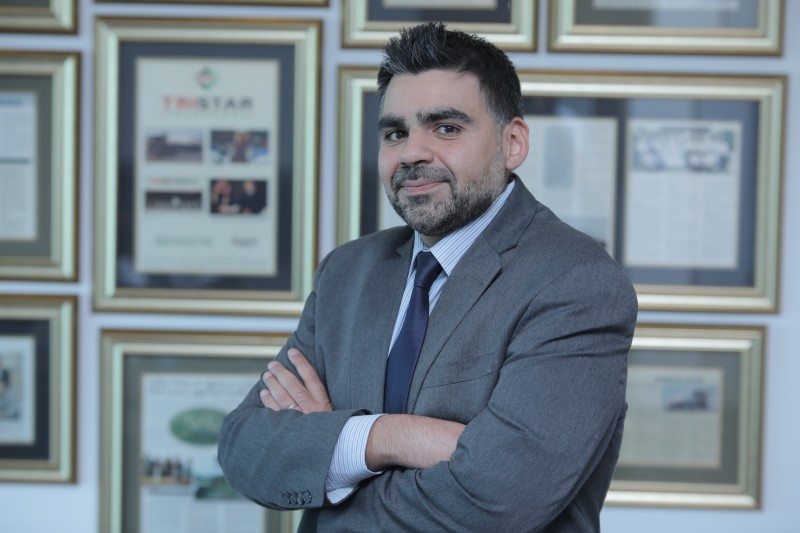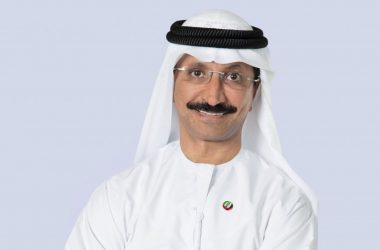
“Twenty years ago, no one could have imagined selling everything on the Internet,” Tristar’s IT group head Adam Lalani believes 2017’s equivalent is now clear. “The world just hasn’t come up with practical Blockchain ideas yet. I think people are missing the obvious.”
Lalani believes that the main hurdle Blockchain must overcome is the ability for its users to think of innovative ways it can change the world. “I remember 20 years ago when Internet access became available, people were asking what the point of it was. You could open one or two weird websites, but not much else. Today, you can literally lie in bed and run your life over the Internet. In some ways, Blockchain is the equivalent in its potential impact.”
Headquartered in the UAE, Tristar specialises in the handling of petroleum and chemicals including hydrocarbons, lubricants and gases, and is a trusted partner to leading energy companies. Towards the end of 2016, one of Tristar’s major energy customers indicated that they wanted to see more technological advancements from the firm, and Lalani set about implementing a selection of changes that could position Tristar as a regional leader in logistics technology.
Tristar was storing and distributing products on behalf of that customer to “over 3,000 locations”, and Lalani wanted deliveries to be tracked in real-time, and to know in advance when deliveries would be taking place.
“If we sent products out to their customers manually, we would only know that a delivery had been completed when the driver returned to Tristar locations,” Lalani says. “If a driver is going from Dubai to Fujairah, that’s a seven-hour roundtrip before you know the goods have been delivered successfully.”
With documents needing verification, and the possibility that orders could change, this had presented issues for Tristar. “There was a big gap in oversight, particularly on deliveries,” Lalani says. “It was unnecessarily complex to simultaneously record what was in our own warehouse and what they had in their inventory system.”
Lalani and Tristar were determined to initiate technological change, and go against the grain for an industry that could often be hesitant to adopt new technology. “Generally speaking, the logistics industry is slow to adapt to new technology,” Lalani says. “It can be difficult to embrace innovation when you still have to provide a service to customers. Many organisations get set in their ways. We’ve gone all in on the digital transformation side, because we want to make sure we’re not left behind. There’s only a certain amount of business to go around.”
Determined to be an early adopter of Blockchain-based processes that could provide significant operational benefits, Lalani appreciates the support that Tristar offered in bringing the technology to the firm. “The inertia behind some organisations makes it difficult for them to make fast changes,” he says. “I’ve usually been someone who doesn’t want to be at the very beginning of new technologies. Change often equals problems, particularly with IT. Someone can make an undocumented configuration change, and two weeks later, you have problems.”
Implementing a four-part Blockchain-based process that could track the arrival of deliveries, Tristar went live with the new service earlier this month, and it is set to make the firm’s operations leaner and smarter. “In many cases, a round-trip to Saudi Arabia could take a driver as long as six days to complete,” Lalani says. “If a driver returns on day six, they would then produce an invoice. However, with Blockchain, from the moment the product is offloaded and signed for, the proof of delivery is recorded in the Blockchain. Once we are fully integrated with our partner systems, we will be able to save an additional half-day there as well, while manual labour times can be cut in half. Blockchain means that no one can change or bend the truth. It’s an irrevocable record of what took place.”
Although Lalani believes that some uses of Blockchain around the globe may not yet offer anything drastically different, he harbours a belief that it has the potential to have a transformative effect on the world. “Some inventions have no utility whatsoever, but others come up with things that solve real world problems,” he says. “When my team started discussing Blockchain, we threw ideas around, but there were only four or five potential use case scenarios and they were not really new solutions. That being said, I’m optimistic because it’s a question of what you can imagine, but haven’t imagined yet. Blockchain’s now being applied to logistics and the global supply chain, but it needs ideas.”
Nonetheless, Lalani concedes that finding real-world use cases for Blockchain is easier said than done. “One of the issues is that there’s a lot of hype around Blockchain. To actually do something with it is harder. It needs more people like us and Dubai government entities to apply real scenarios.”
He feels that in order to achieve this, new approaches to what Blockchain can do need to be considered. “Blockchain is used for peer-to-peer currency transactions, but is now being adapted,” Lalani says. “Screw presses that that were used to crush olives and grapes were adapted into the printing press, which changed the world. Using existing technology to devise something new is a thread that runs throughout technology history.”
Tristar has also taken another significant measure to improve its operations – and crucially, safety – through cutting-edge technology. The firm has been trialling facial recognition technology which tests if drivers are fatigued during a journey, using infra-red cameras, operating in daylight or pitch black.
“In Dubai alone, we operate 500 vehicles, and safety is one of our of key tenets,” Lalani says. “Anything we can find that makes roads safer, we will look to leverage. Drivers often travel hundreds of kilometres in one go. We don’t have eyes inside the vehicle, so we don’t know what drivers are doing.”
The tests Tristar conducted instantly yielded results. “We the did the POC for three vehicles for six months,” Lalani says. “In the first phase, we monitored them in the driving cabins without alerting them. Then, there would be an alarm and seat vibration if the driver showed signs of fatigue. Those triggers led to a 96 percent reduction of fatigue.” Tristar is now in the process of negotiating the contract for the technology, with a view to roll it out for an initial 50 vehicles.
Tristar and Lalani have also explored the possibility of introducing robotics technologies into the firm’s warehouse, but there remain a few obstacles that need to be cleared before that can become a reality.
“The study we undertook was a bit too costly and risky,” Lalani says. “We looked at automating forklift trucks, but if we’d funded that it would have taken us decades to break even compared to the cost of two forklift drivers. If the right provider were to come in, we could potentially reconsider.”
Lalani believes Tristar’s experience with robotics will apply to the world at large. “I don’t see robotics replacing human jobs in the near future,” Lalani says. “The technology is not cheap enough for mass adoption, but it will happen eventually.





